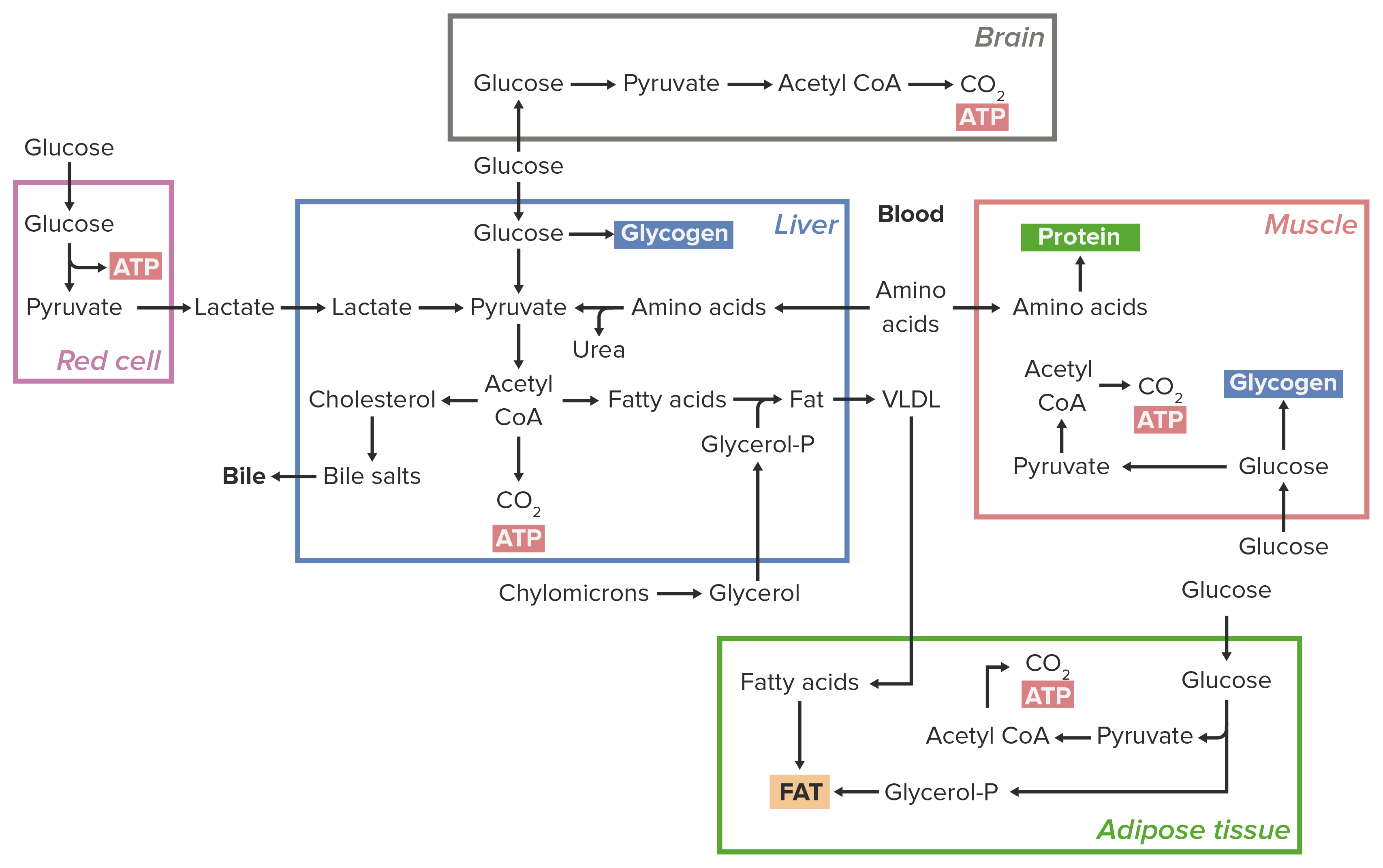Playlist
Show Playlist
Hide Playlist
Body Mass Index (BMI)
-
Slides EnergyConsiderations Nutrition.pdf
-
Download Lecture Overview
00:00 So let us next consider what techniques are used to measure health. 00:09 And I profess in the US and by the USGA and our general medical practices. 00:16 And there are two main techniques that we use. 00:20 Varying opinions on the currentness of the techniques but Body Mass Index is sort of we go to -- we don't need to actually measure fat concentration for this or fat percentage for this or lean body mass. 00:36 That's one of the criticisms of it. 00:38 We are simply taking kilograms and dividing them by the height in metre squared. 00:44 And that gives us a body mass index number. 00:47 Now if you are doing it in a metric system, it's all simple and easy. 00:53 You could either choose to convert your mass from imperial to metric and use kilograms. 01:00 And height from inches to metres, and use meters or you could take those figures and multiply them by a factor of 703. 01:08 Depends which you think is easier to do. 01:12 But that's a number to keep in mind, if you're going to use pounds and inches as a measurement for body mass index. 01:19 So let's take a body mass index of an individual who is 160 pounds and 67 inches tall using our American system we multiply by imperial system. 01:36 We multiply that by a factor of 703. 01:39 We get the same number whether we use imperial or metric. 01:42 And that is a body mass index of 25. 01:46 When we look at that body mass index, their standard charts, you can find them all over the place. 01:51 And you'll see that they are broken down into categories of underweight, normal, overweight and obese. 01:59 And these categories get quite a bit of criticism because obviously we haven't taken into consideration lean body mass versus fat body mass. 02:12 And when considering athletes and very muscular people, we may have someone with a body mass index over 25. 02:22 That is showing up to be either overweight or obese depending on the numbers. 02:28 That is actually just very physically fit and has a high bone density or high muscle mass. 02:35 So body mass index does get some criticism but again it is the standard. 02:42 Another measurement or another parameter that we use to give a little bit more credit to or in conjunction with the body mass index. 02:53 Obviously, we have blood testing and we can see what all the various levels of metabolites and such are but Waist-to-Hip ratio is a quick measure you can probably get a good gauge by looking at someone as to their waist-to-hip ratio. 03:11 But there is a calculation for it. 03:13 And the point of doing a waist-to-hip ratio is about differentiating between visceral and subcutaneous fat. 03:25 So subcutaneous fat, that's the fat that's under our skin. 03:28 We can feel it. 03:29 We can pinch it. 03:30 We can use a Caliper test to assess the fat mass of someone. 03:37 However, you cannot measure visceral fat because it's inside. 03:42 And inside the peritoneal cavity and all of that fat is natural to have a certain amount of that fat to protect the organs and pad things. 03:54 And create a safe environment for our organs. 03:58 However, when we have an excess of that fat it's associated with certain maladies. 04:05 Now how do we do a waist-to-hip ratio. 04:08 The measurements are taken at one inch above the waist. 04:12 And the narrowest point of the waist. 04:15 And the widest point of the hips. 04:20 And we take the waist, we divided by the hips. 04:22 And there you have your ratio. 04:24 Ideally, that ratio is 1 or less. 04:29 Again here are some numbers. 04:31 They vary from source to source. 04:34 But in general it's assumed that optimal numbers are about 0.08 for women, 0.09 for men because men generally have narrower hips. 04:45 However, I wouldn't recommend committing them necessarily to memory. 04:50 I would say that a ratio over 1 is probably less than optimal. 04:55 So good numbers to keep in mind. 04:58 But again no need to get absolutely specific with that. 05:02 There are many studies as I'm sure you're familiar that indicates that having a high ratio of waist-to-hip is a chance of developing insulin resistance, type II diabetes and some metabolic syndromes. 05:22 So you are probably familiar with this waist-to-hip ratio in terms of the apple versus pear shape. 05:30 So apple shape is suppose to be an unhealthy shape. 05:33 Someone with a larger waist, and narrower hips. 05:36 Have lots more visceral fat inside the body cavities than someone who is pear shaped, who has wider hips and a narrower waist having a much more lower ratio. 05:50 So, that's what you need to know about waist-to-hip ratios. 05:54 What are some of the consequences of BMI being too high? These are the ones that we need to be aware of. 06:05 I'm sure that you're familiar with those. 06:08 Hypertension. 06:09 Diabetes type II. 06:11 Incidents of stroke increases. 06:13 Incidents of coronary heart disease or artery disease. 06:17 Dislipidemia. 06:19 We see variation in HDL and LDL such that the high density or good lipid proteins drop. 06:25 And LDLs increase bad lipid proteins. 06:29 Triglycerides increase. 06:32 Very low density lipid proteins. 06:34 All of these are consequences that we need to keep in mind and are certainly responsible for knowing for tests. 06:44 Sleep apnea definitely can happen. 06:46 And of course cancer. 06:48 And part of the reason that we are at high risk for cancer is that it's not only the overuse that produce estrogen, fat cells also produce a certain about of estrogen. 07:00 So, if you have an estrogen dependent cancer developed then higher levels of fat would increase the levels of estrogen and there are definitely lot of studies showing that leads to higher incidents of cancer. 07:17 So keep all of these consequences in mind. 07:20 Again I'm sure there are ones that are sort of already in the back of your head but it's nice to put a list together. 07:27 In fact on that note, why don't you pause and see what sort of list you can put together. 07:32 Hide your screen and write down all of the consequences of having too high of a BMI. 07:41 So now let's consider what it takes to cut the fat. 07:47 Now we all know that having a higher caloric output than caloric intake is going to have a caloric deficit. 07:56 But how much does it take to actually cut the pound of fat. 08:00 When we look at burning pound of fat, the number that's reported is 3500 calories. 08:08 Now that is a pretty standard number and you should commit that one to memory. 08:12 It's a standard estimate for the caloric deficit it takes to burn one pound of fat. 08:19 Now if you are like me, you probably have gone and calculated it out and thought that one pound of fat equals about 454 grams. 08:27 And if fat is 9 calories per gram, guess what, that number is bigger than 3500 calories. 08:36 Why is that? So you could scratch your head for a while and think about it. 08:42 And probably recognize that fat, body fat is not just made up of purely oil or fat, it is cellular matter to those cells although they have a lot of fat in them. 08:57 Or so have organelles. 08:59 So their cellular components to subtract from that fat amount. 09:04 Either way the bottom line is it is a lot of work for our patience to lose one pound of fat. 09:11 3500 calories in a day when you consider, let's say an intake of about 2000 calories a day which might be high. 09:20 But say in an active person then we have to a deficit for one pound of fat of about 500 calories a day. 09:29 And that's quite a large deficit in order to lose a pound in about a week. 09:34 So, this is just a number that you need to keep in mind so that you can cancel patience as to how long and make accurate predictions or realistic predictions as to how long it's going to take to lose the poundage. 09:52 So in short we've covered very fast snippets of each of the things that you need to know about energy expenditures and values in a nutrition. 10:05 So,I look forward to seeing you in future lectures as we explore more on vitamins and such in nutrition.
About the Lecture
The lecture Body Mass Index (BMI) by Georgina Cornwall, PhD is from the course Nutrition. It contains the following chapters:
- Body Mass Index (BMI)
- Waist-to-Hip Ratio
Included Quiz Questions
Which of the following would a man with a waist to hip ratio of 1.2 be more likely to have than a female with a waist to hip ratio of 0.7?
- Insulin resistance
- Decreased joint pain
- Decreased LDL
- Decreased triglycerides
- Type I diabetes mellitus
What is the BMI of a woman with a height of 153 cm and a weight of 60 kg?
- 25.63
- 24
- 18.2
- 20.4
- 30.8
A patient with a BMI > 40 is at risk for all of the following diseases except?
- Type I diabetes mellitus
- Hypertension
- Type II diabetes mellitus
- Coronary heart disease
- Stroke
After two weeks of dieting, your patient is in a 7000 calorie deficit. Approximately how many pounds of fat should he have lost?
- 2
- 4
- 1
- 0
- 10
Which of the following is a criticism of BMI?
- It does not account for lean body mass.
- It does not account for people's genetics.
- It does not take into account a person's height.
- It does not take into account a person's weight.
- It cannot be converted from the imperial measurement system to the metric system.
Customer reviews
5,0 of 5 stars
| 5 Stars |
|
2 |
| 4 Stars |
|
0 |
| 3 Stars |
|
0 |
| 2 Stars |
|
0 |
| 1 Star |
|
0 |
She explains good and the material is authentic. It is helping me alot, since I was hospitalised in my recent classes.
Concise, easy to understand and relevant for the USMLE Step 1. Very good ! A+++




